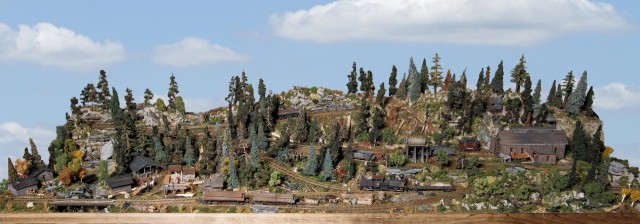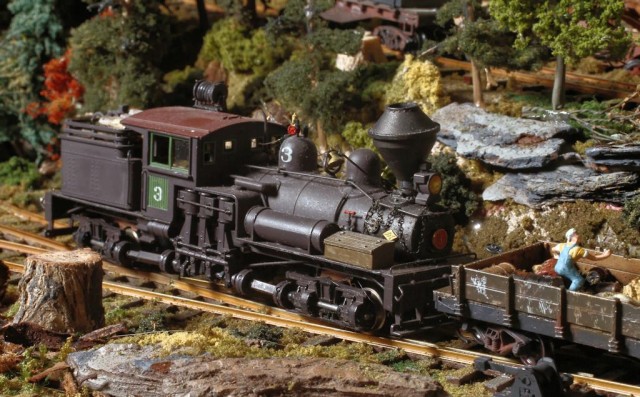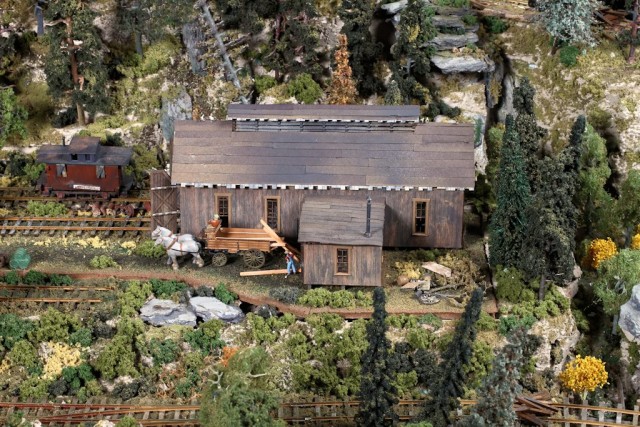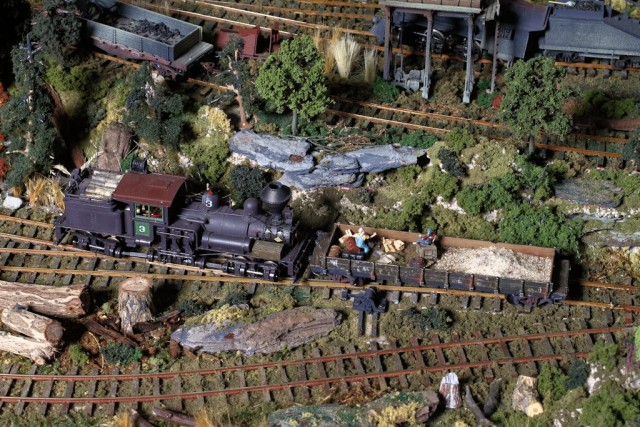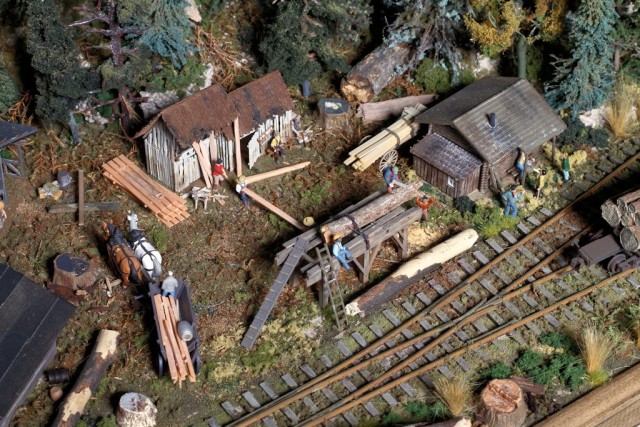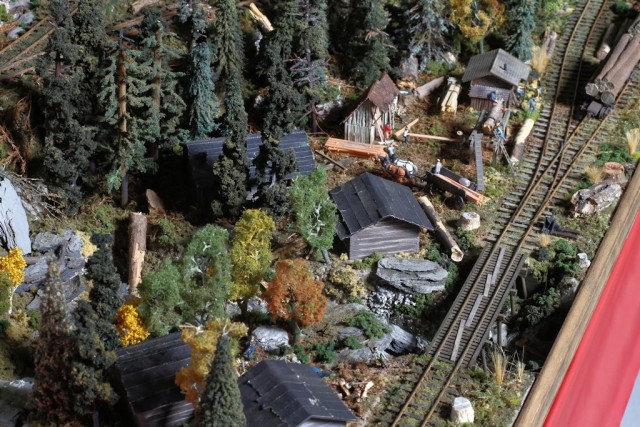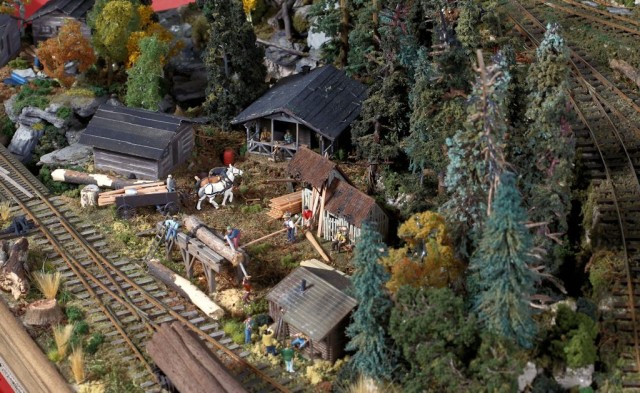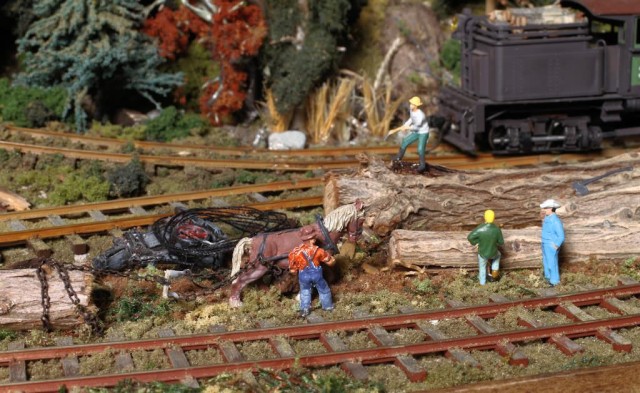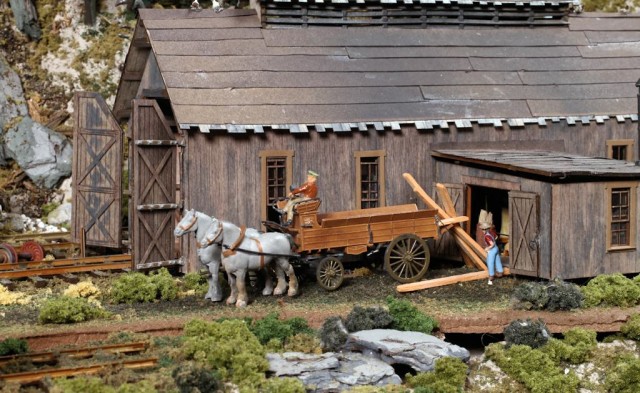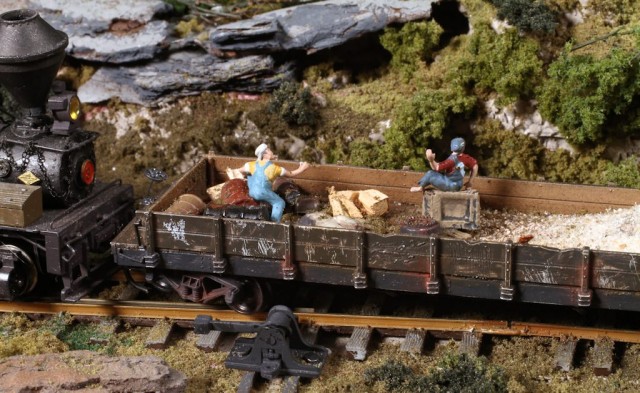Photos by Richard Schumacher
By the 1880s, logging railroads were common in the dense old-growth forests of California. The loggers would clear-cut sites (usually the easiest to access first) which met their needs for a camp: service buildings, tramways, and sawmills. Tom’s diorama includes all the elements of a California logging camp.
These railroads were cheaply and simply built. They didn’t use sub-roadbeds, signal systems, or timetables. Point-to-point operation used geared locomotives (better on steep grades) and disconnect logging trucks (easier to build and use over flat cars). Once an area was clear of timber, the trackage was torn up and used elsewhere. Once the timber was out of the mountains, traditional standard gauge locomotives would take it to the mill or to market.
Tom indicated that even small sawmill operations of 10,000 board feet per year (bfpy) could be profitable. Larger companies produced up to 40,000 bfpy, and large corporate operations produced over 100,000 bfpy.

